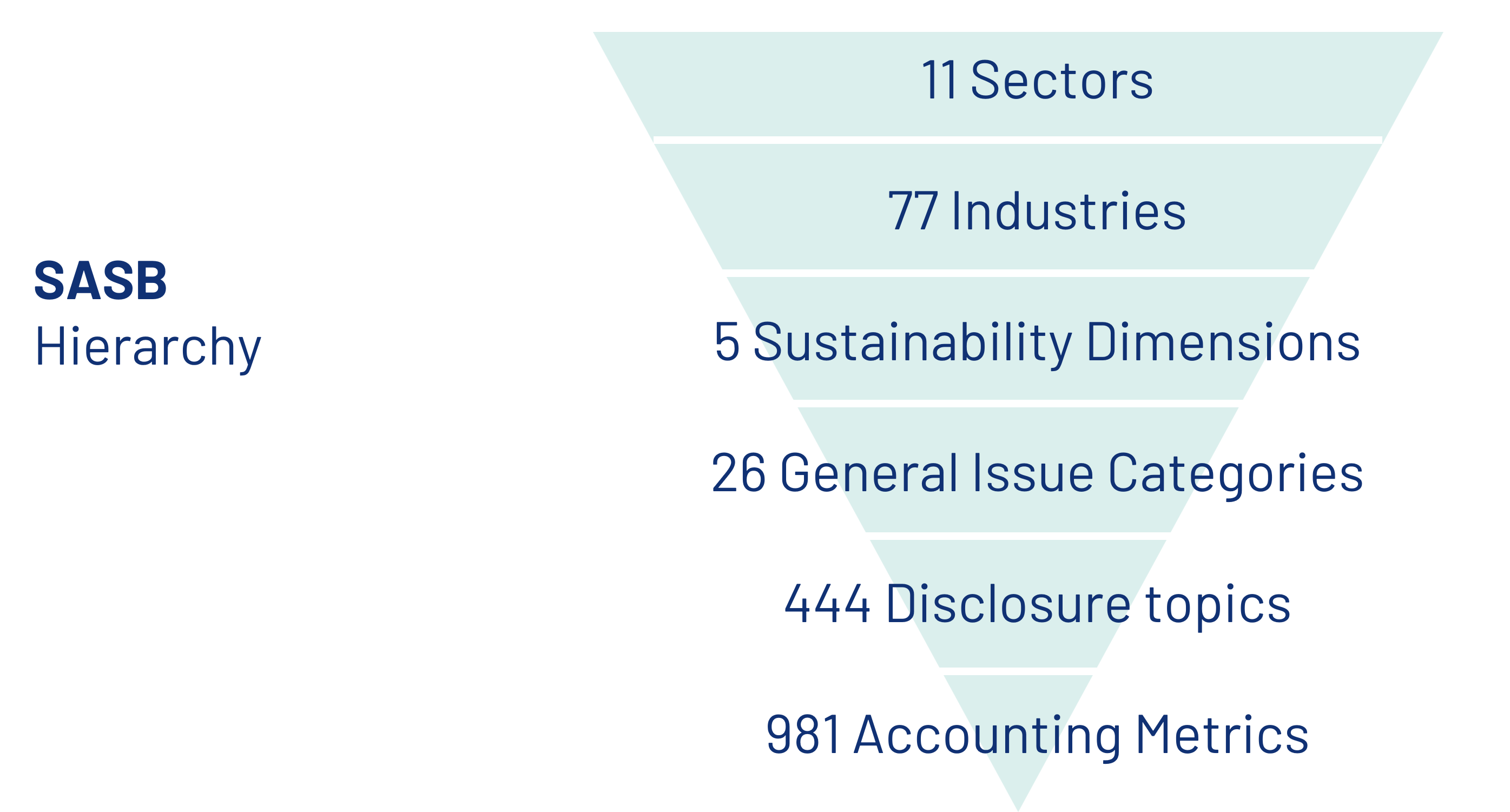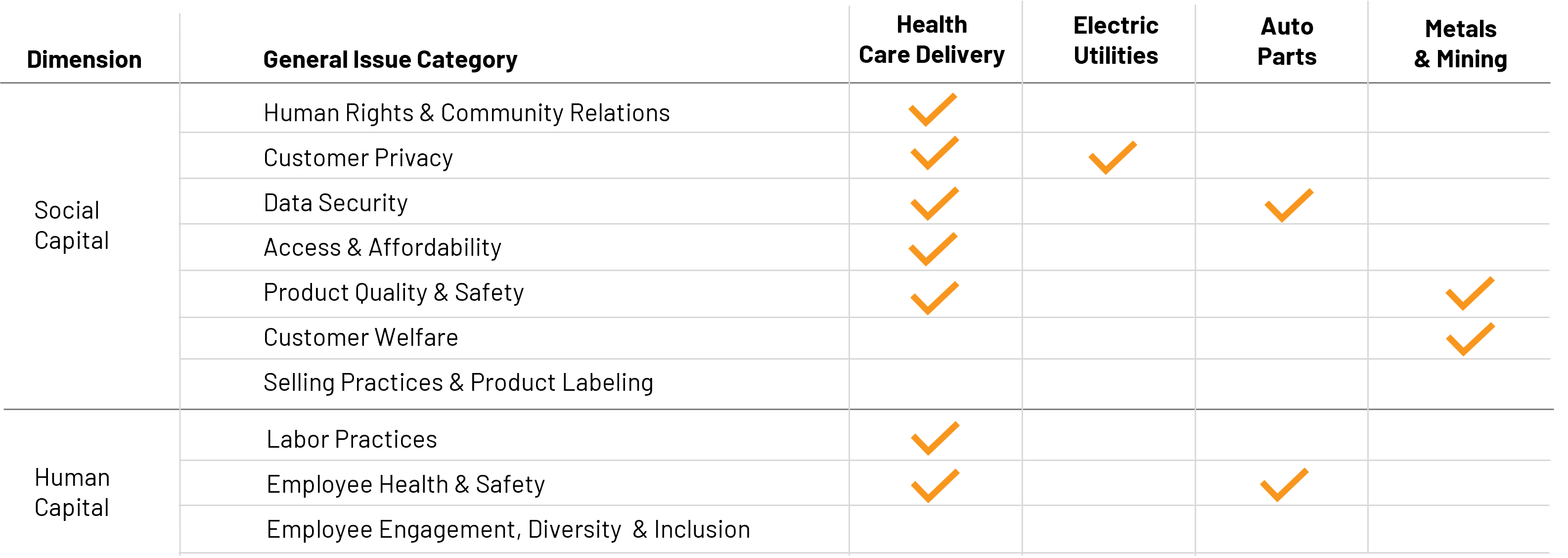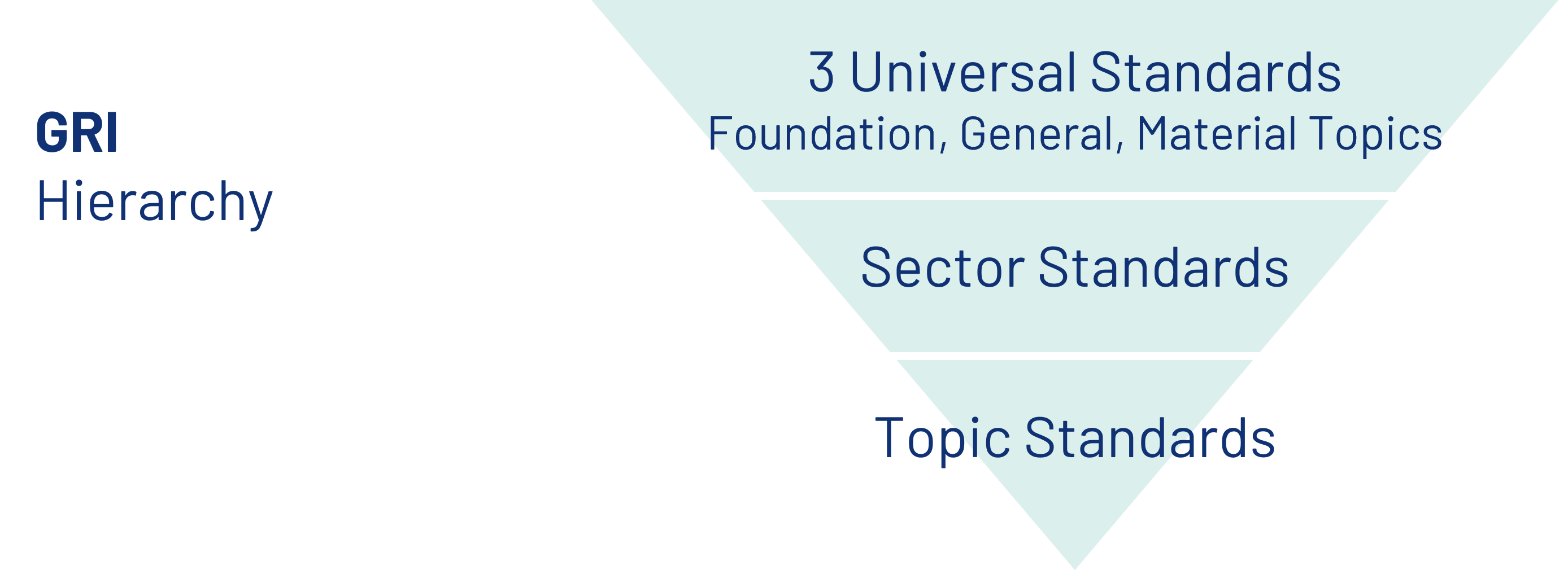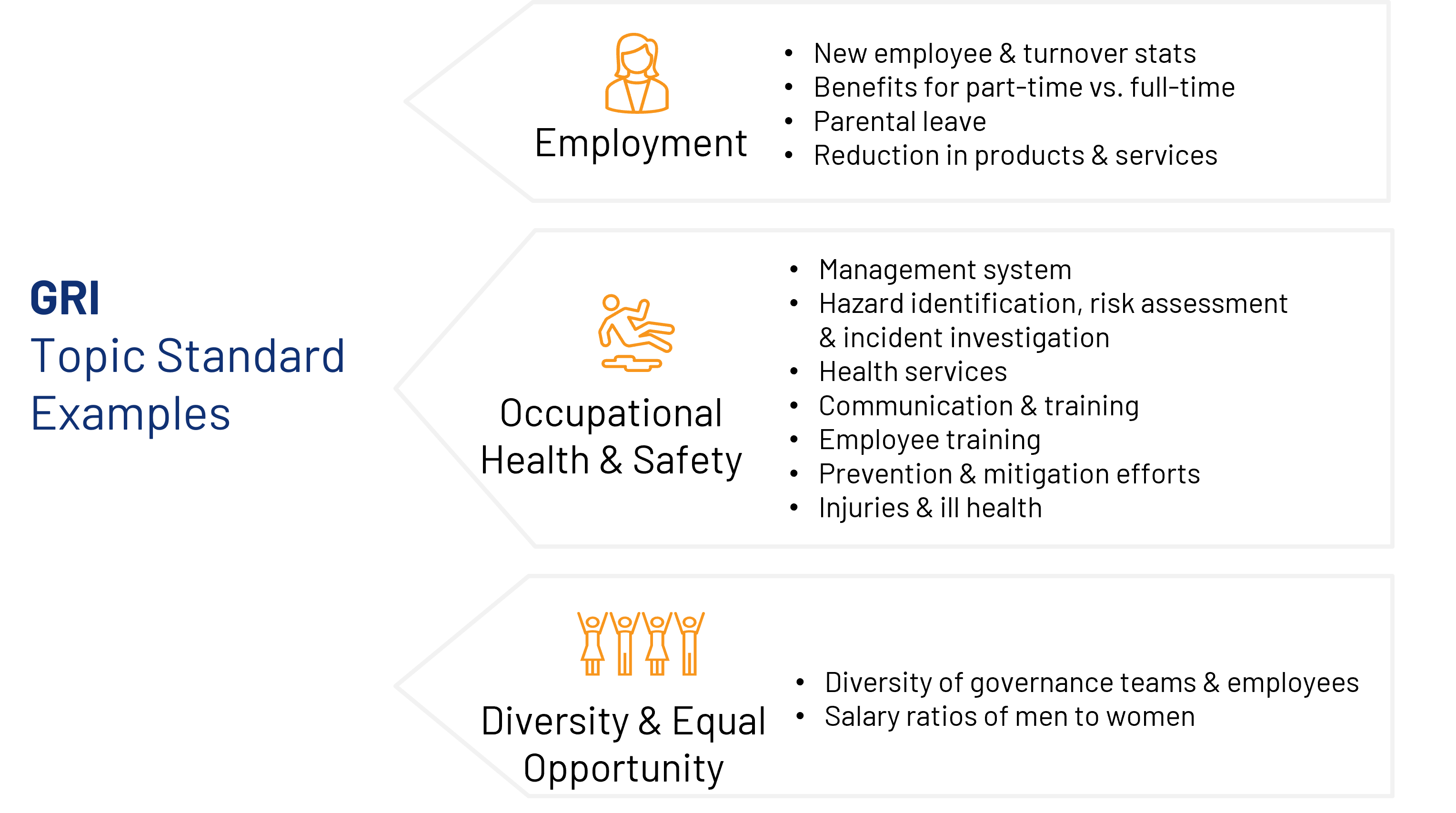How to use ESG standards to build your social strategy

ESG standards for Social Practices
While ESG regulations and compliance requirements have not been formally established in the United States, corporations can leverage existing ESG standards and frameworks to build effective social practices in an overall ESG program.
There are a dozen unique ESG standards and frameworks in use across the globe today; however, in this article, we’ll focus on the two most common ESG standards applied in the United States for social practices: SASB and GRI.
SASB Standards
The Sustainability Accounting Standards Board (SASB), is most commonly utilized by financial institutions, including asset managers, investment banks, and credit unions. While you do not need to be a financial institution to utilize SASB ESG standards, they provide very clear direction on financial metrics to track and evaluate the performance of social practices.
SASB hierarchy is comprised of sectors, industries, sustainability dimensions, general issues categories, disclosure topics, and accounting metrics.

SASB standards start with sectors or high-level categories then industries within those sectors. There are five sustainability dimensions that span every industry and sector (consider sustainability dimensions and the general applications for everyone). Beneath sustainability dimensions are general issue categories that represent individual material issues unique to each industry. There are five or six disclosure topics for each industry and one to three accounting metrics for each disclosure topic. Accounting metrics comprise 2,520 sub-metrics, 74% of which are quantitative.
As you can see, using SASB standards the figures quickly add up regarding what you’ll need to track regarding social practices in your ESG program. When you’re serious about implementing social practices in your ESG program, it’s a good time to explore how technology can alleviate the burden of tracking plans, tactics, and metrics.
Easy ESG Tracking & Reporting
Learn how automation creates consistency and ease in ESG management
Here’s an example of how SASB sustainability dimensions and general issue categories apply across industries. You can see it is not a one size fits all approach. The expectations for tracking and reporting are heavy for healthcare delivery organizations compared to electric and energy utility companies.
SASB standards example

Keep in mind, SASB offers guidelines, not requirements, so if your organization is just getting started in setting up social practices in an ESG program, use these categories for direction on where to start. What is right for your organization will come down to what aligns with your mission, stakeholders, employees, customers, and what you can afford to invest in both time and money.
Looking for ESG examples?
Explore best-in-class social practices from ESG leaders
GRI Standards
The other commonly used ESG standard is the Global Reporting Initiative (GRI). GRI breaks down the ESG hierarchy by universal standards, sector standards, and topic standards.

Three types of standards fall under GRI’s Universal top-level category: foundation, general, and material topics.
- Foundational standards specify any social requirements your organization would want to comply with.
- General standards contain the disclosures your organization would use to provide information on your social reporting practices (e.g., think governance and policies).
- Material Topic standards include social-specific elements that could have a material impact on your business.
The middle-tier of standards in the GRI hierarchy are Sector Standards. Sector standards are often the best place to start when determining specific social-related Material Topics for your organization. Run through the GRI list of Sector Standards to identify which apply to you that you’ll need to track, measure, and report on.
The lowest tier in the GRI hierarchy is made up of Topic Standards, which provide a more detailed level of disclosures necessary, including how your organization is managing your social practices and their individual impact.
GRI examples
Here are a few examples of GRI topic standards specific to the social component of ESG. These three topics represent common starting points for corporations embarking on social impact initiatives: employment, occupational health & safety, and diversity and equal opportunity.

The same two basic elements apply when you’re looking at these topic standards:
- Do you have established practices?
- What is your measurement approach?
Let’s take the GRI diversity and equal opportunity standard topic and break it down further to clarify how you can apply this topic to execute social practices in your ESG program. This standard informs the need for you to document the current makeup of your organization’s governing board, management team, and employees from both gender and ethnic perspectives.
Having visibility is just the first step. The second step is deciding what your organization wants to do with that data. If it is heavily skewed to one demographic over another, consider how that impacts leadership’s decision-making, the business strategy, and even recruiting efforts. Then decide whether you need to put a plan in place to change the ratio. If yes, devise a plan and act.
GRI vs. SASB for Social Practices
GRI is similar to SASB in that both break down standards by sector and industry, while simultaneously providing general applications that are similar across all industries. Choosing the preferred standard to devise the social strategy in your ESG program is like choosing whether you’ll follow: agile or ITIL IT development processes. Go with the one that better aligns with how your business operates and makes decisions.
Once you establish whether your organization will follow a specific ESG standard or framework, your next step is to outline the specific social topics and disclosures your organization will focus on. With this shortlist, you’ll want to work through a detailed action plan to execute against the strategy for your ESG program.
This planning process entails documenting a detailed social approach to governance, strategy, risk management, metrics and targets, and integration across your business.
Build a Social Roadmap for ESG
Check out the step-by-step guide to focus your social strategy in an ESG program
More Reading to Check Out
What Does ISO Certified Mean and Why Is It Important?
Curious about what does ISO certified mean for your business? Learn how this credential can boost your company's efficiency, sustainability and customer trust. as well as the steps to achieve ISO certification.
4 Writing Tips for Annual GRC Updating
Now is the time to refresh your GRC policies and procedures for the coming year. As you begin to write these updates, here are four tips to help boost your writing skills for better drafts and more compelling corporate narratives in your business documents.
What is Governance, Risk and Compliance (GRC)?
Governance, Risk, and Compliance (GRC) is your all-in-one practice for operating your business safely and efficiently. Learn how integrated GRC can streamline operations, mitigate risks and ensure you stay compliant.





